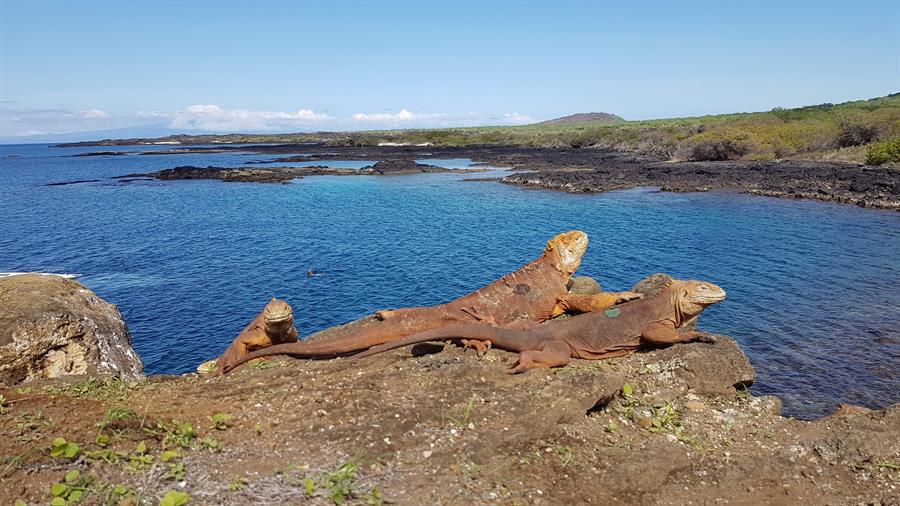
These reptiles, which can grow up to a meter in length, will be monitored in the release zone and their adaptation to their new habitat can be evaluated.
Technicians at Galapagos National Park, Ecuador, have relocated 461 land iguanas to Santiago Island, from another in the Ecuadorian archipelago, with the goal of returning these reptiles to a habitat from which they had become extinct.
The ecological restoration project for the Galapagueñas iguanas, belonging to the species Conolophus subcristatus, started about 20 years ago on the island of Santiago.
It was developed in parallel with the eradication of predatory species such as pigs, donkeys and wild goats, which feed on all types of vegetation, and according to specialists it changed the habitat of endemic animals of the Galapagos Islands.
You may be interested: the rescued sea lion on the Salvadoran coast suffers from “infectious bronchitis”
A first group of specimens were introduced to the island in January 2019 and their adaptation has benefited the ecosystem that is home to Darwin’s finches, a colony of seals, sea lions and flamingos, among other native species.
The land iguanas released this time in Santiago were captured on North Seymour Island.
Galapagos National Park director Danny Rueda explained that because they are herbivorous, as they eat cactus leaves, fruits, thorns and flowers, they have the function of spreading the seeds within the ecosystem and are able to maintain the ecological integrity of the island. .

“The goal of reintroducing the iguanas to Santiago Island is to return this extinct reptile more than 200 years ago to its natural ecosystems,” added the director of Galapagos National Park. Photo: EDH / EFE
The Ecuadorian Ministry of Environment and Water has specified that ecological rangers intervened in the operation, charged with capturing the reptiles, typically because they are yellowish in their pockets. The goal is to maintain your mood to avoid stress in the species.
One of the specialists, Jean Pierre Cadena, assured that it is a delicate and difficult to manipulate species.
“We’re trying to make sure the species doesn’t feel threatened, with biosecurity measures, so that the animal isn’t under as much stress at the time of capture,” he said.
Before their release on Santiago Island, the 461 land iguanas underwent a process of quarantine and morphometric data recording, including a physical exam, deworming, and tagging with an identification chip.
In this way, these reptiles, which can grow up to a meter in length, are monitored by rangers in the release zone and their adaptation to their new habitat can be evaluated.
The National Park technicians hope that the site will be fertile, after verifying the first released specimens, juveniles, burrows and possible nesting areas, laying between one and twenty eggs, in late 2020. verified the availability of your food.
Also read: Outrage in networks about a man who harasses an elephant seal on the beach of Metalío
The management measures implemented on these islands, in particular with regard to the control and elimination of introduced species such as rodents in North Seymour (2019) and pigs, donkeys and goats in Santiago (2002 and 2006), have reduced the population of land iguanas in these islands made possible. unique island ecosystems remain healthy.
Cataloged as a World Natural Heritage Site by UNESCO in 1978 because they form a unique land and marine ecosystem in the world, the Galapagos Islands are located approximately 1000 kilometers from Ecuador’s continental coasts.